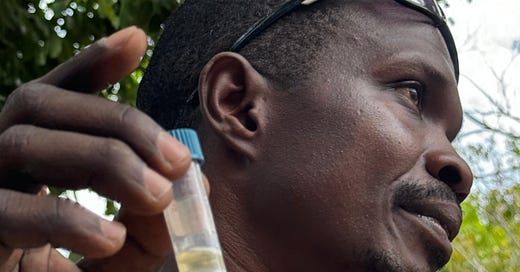Meeting the Snake Mother
Watamu Snake Farm and Kenya's Snakebite Research and Intervention Center
I took a local bus from Kilifi to Watamu late on Sunday. The following morning, I made my way over to the Watamu Snake Farm (WSF). The snake farm has a long history in the world of snakes*.
Watamu Snake Farm
The Watamu Snake Farm (formerly known as Bioken) was founded in 1980 as a reptile research and education center by the late James Ashe and his wife, Sandra. James was a snake lover, whose passion and association with the National Museums of Kenya made a name for the institution. Following James Ashe’s passing, Royjan Taylor took over the running of the farm and The Taylor Ashe Antivenom Foundation (TAAF) was founded in memory of both James Ashe and Royjan Taylor, to over see the running of the farm.
Royjan had a vision to create the first snakebite center of excellence in Kenya. Just prior to his untimely death, he was working alongside the Global Snakebite Initiative (GSI), the Lillian Lincoln Foundation (LLF) and other organizations to support the development of a new Pan‐African polyvalent antivenom to meet Africa’s dire need. Unfortunately, in the wake of his death, new laws in Kenya meant that this dream has been stalled as the Watamu Snake Farm goes through a stringent licensing process to allow the use of the venoms they produce for antivenom production. The team are wading through regulations, and in the meantime, they continue to support snakebite victims in the local community with donations of antivenom, thanks to additional support from Premium Serums (an antivenom producer).
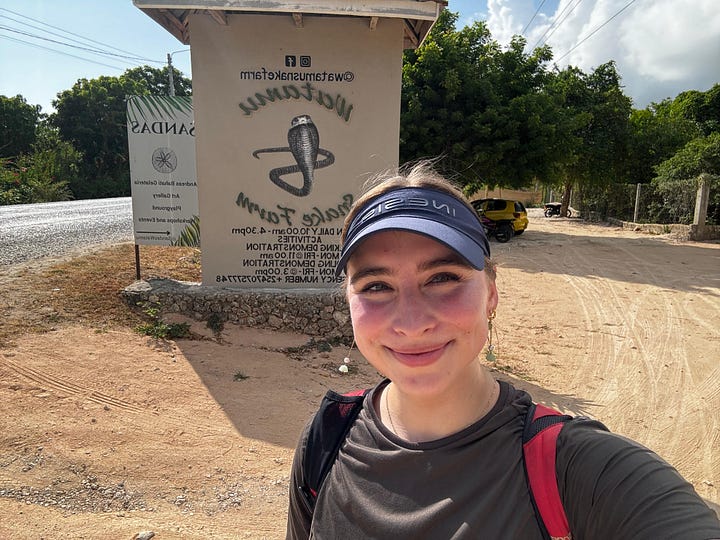
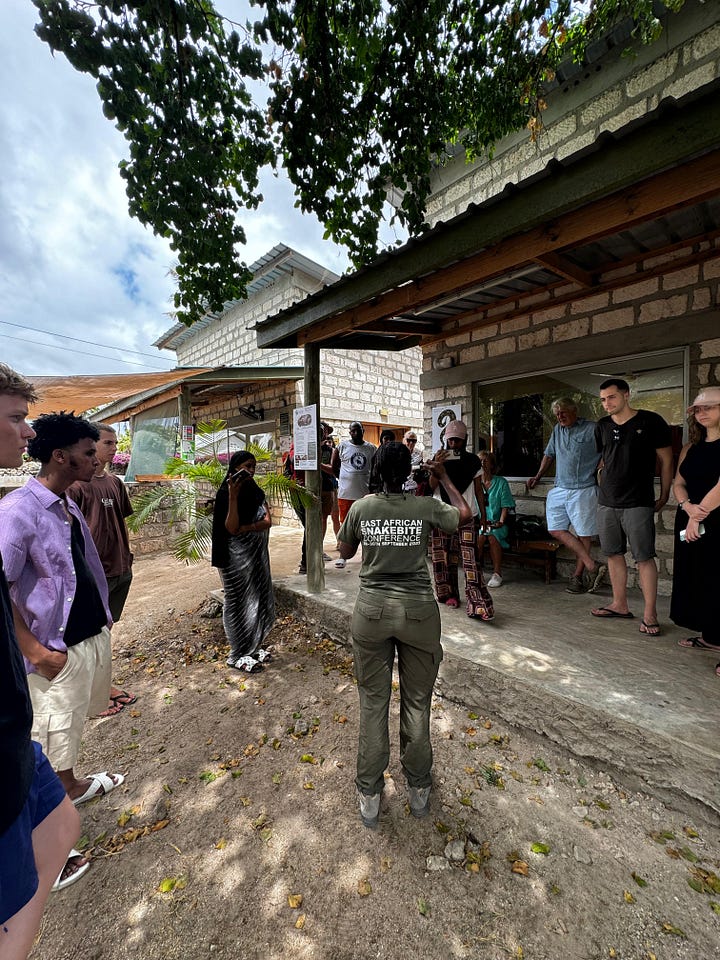
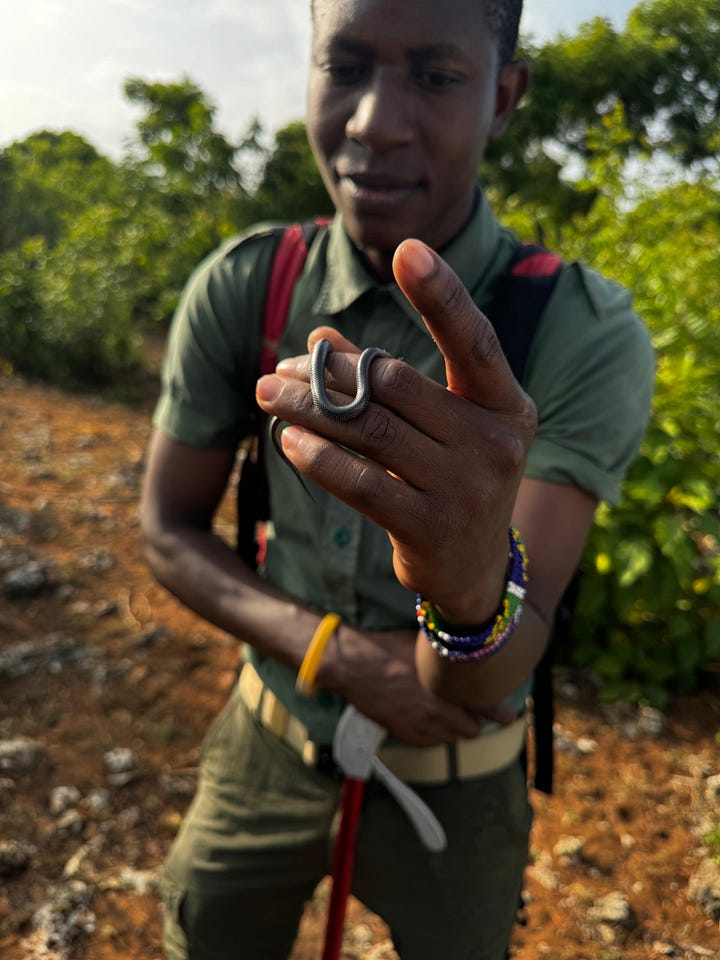
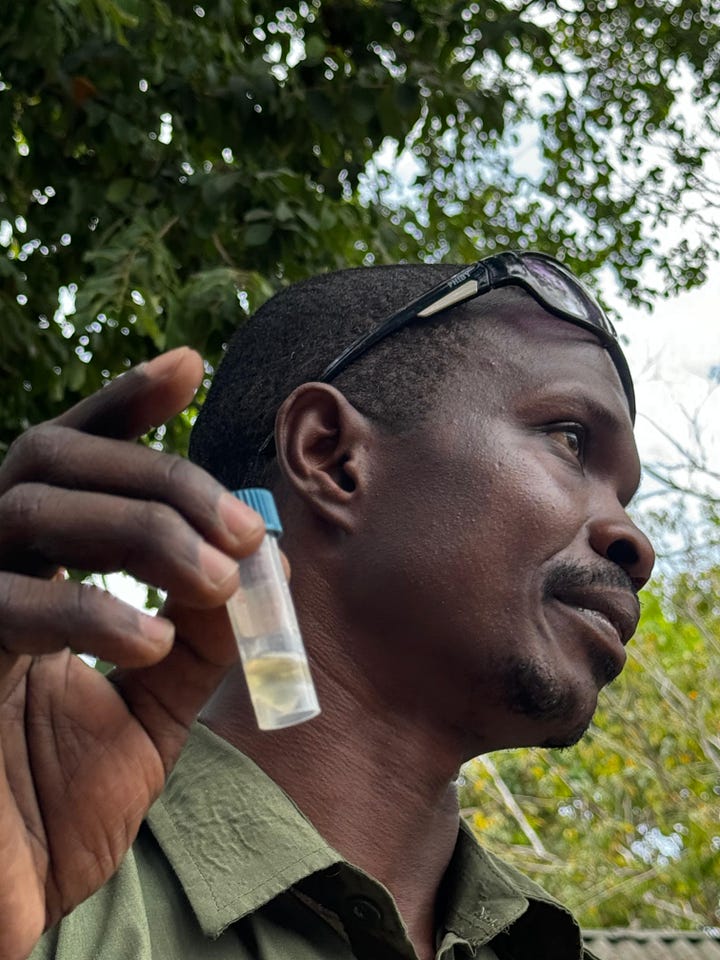
Today, the farm operates similar to a zoo, and the gate entry helps to support the philanthropic activities of Watamu Snake Farm. Guests are guided through the exhibits by experts who dispel myths, explain “snake safety,” and give fun facts about each species. Throughout the working week, there are venom extraction (milking) demonstrations and snake handling demonstrations. I spent a week at the farm, learning about their activities and making a few short videos for their social media.
Watamu Snake Farm also trains people in snake handling. While I was visiting, I met Andrea, a Spanish adventurer and safari guide. He was training to remove snakes from houses, a process that begins with theoretical studies of snake anatomy, ecology, and biodiversity before moving onto hands-on practice. I got to sit in on some of his lessons, learning about local Kenyan snakes and safety while handling.
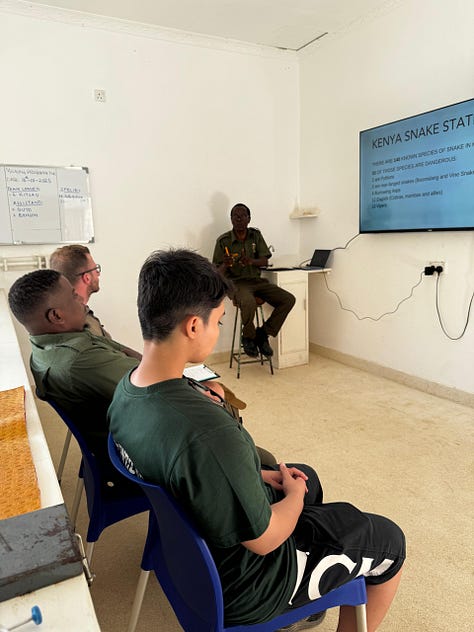
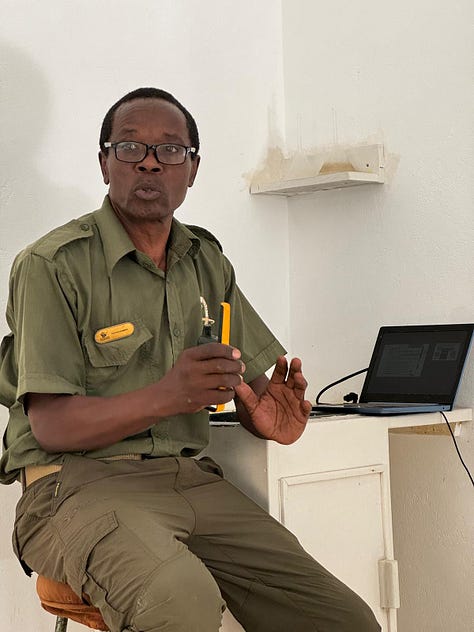
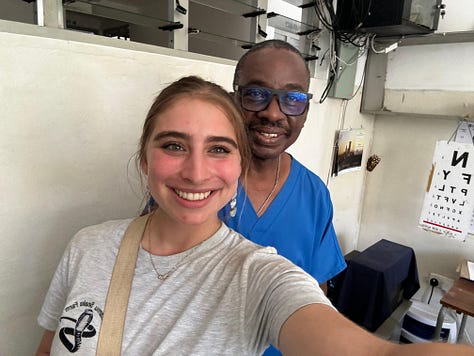
I got to know Mary, an educator at Watamu snake farm who explained that they also go out to schools and villages to teach about snakebites and correct first aid. One particularly interesting obstacle to these programs in Kenya is the culture of “sitting fees.” These are small sums of money that government health missions often pay to community members who attend health promotion workshops. They may get some compensation for their time, for missing work or transportation. However, (explained Mary) people have come to expect compensation, and many choose not to attend when they find out that the free workshop isn’t paid.
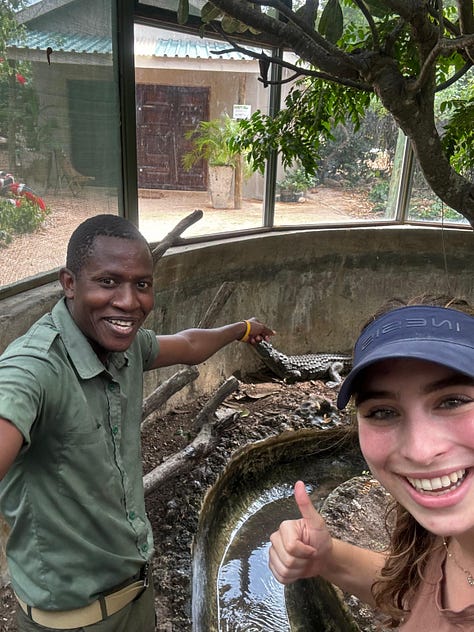
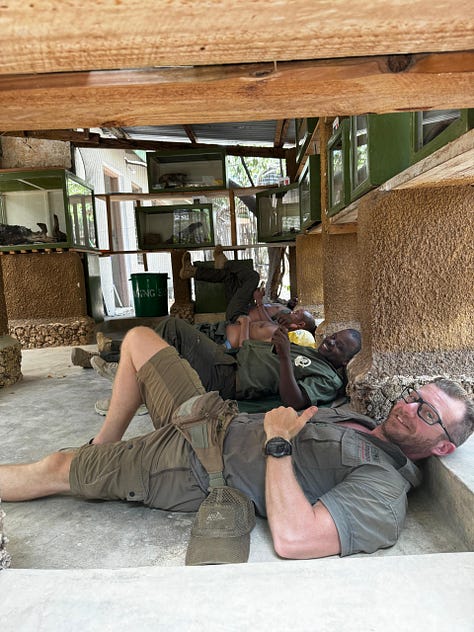
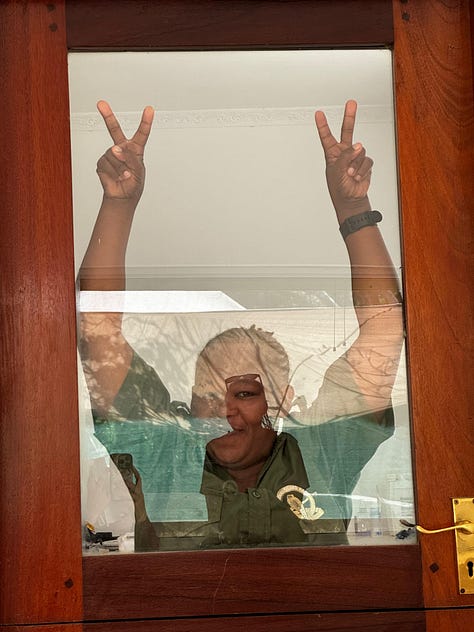
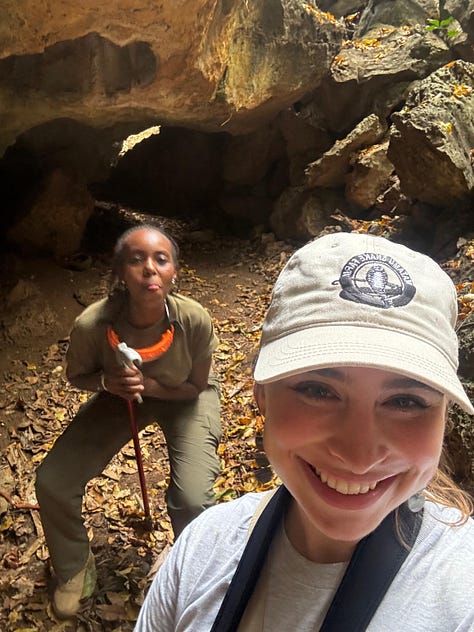

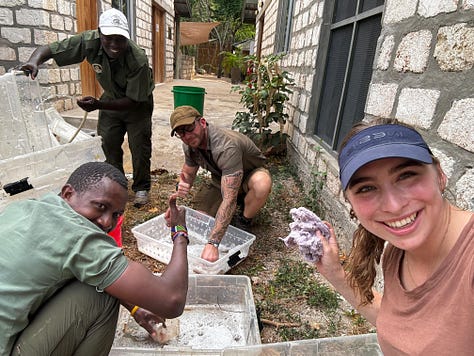
I spent a beautiful week in the coastal town, sharing meals of ugali (corn paste) and mbuzi (grilled goat meat) with the Watamu Snake Farm staff and listening to their wild stories. During the evenings, I walked by the beach and enjoyed local Gelato (the town has a significant population of Italian tourists and expats).
On my last full day in Watamu, I got to meet Dr. Eugene Erulu, a local physician with many years of experience in treating snakebites. He explained that antivenom is often scarce, healthcare providers are untrained in snakebite management, and many victims seek traditional medicine first (resulting in delays to care).
One suspected puff adder bite patient was at the hospital at the time. We went to go see the young boy, who had been bitten on the ankle while walking. His leg was a bit swollen, but otherwise no one would have known he has survived a potentially mortal snakebite.
“He came to the hospital quickly and received two vials of antivenom,” Dr. Erulu explained. “He’s healing very well.”
While it’s hard to quantify, it’s clear that communities in and around Watamu have benefitted from educational campaigns on what to do in case of a snakebite. Watamu Snake Farm and other actors have been working tirelessly to dispel myths, encourage snake safety and encourage hospital visits. This young man’s life and livelihood are evidence that such campaigns can prevent tragedies.
I had spent an amazing week at the snake farm, and wanted to convey my thanks. After walking around the beach town to various bakeries, I had found one that would decorate a cake with a cobra and “asante sana,” (thank you very much in Swahili). We cut the cake as snake experts sang a cake cutting song in Swahili, dancing. I fist bumped and hugged my new friends, then said farewells.
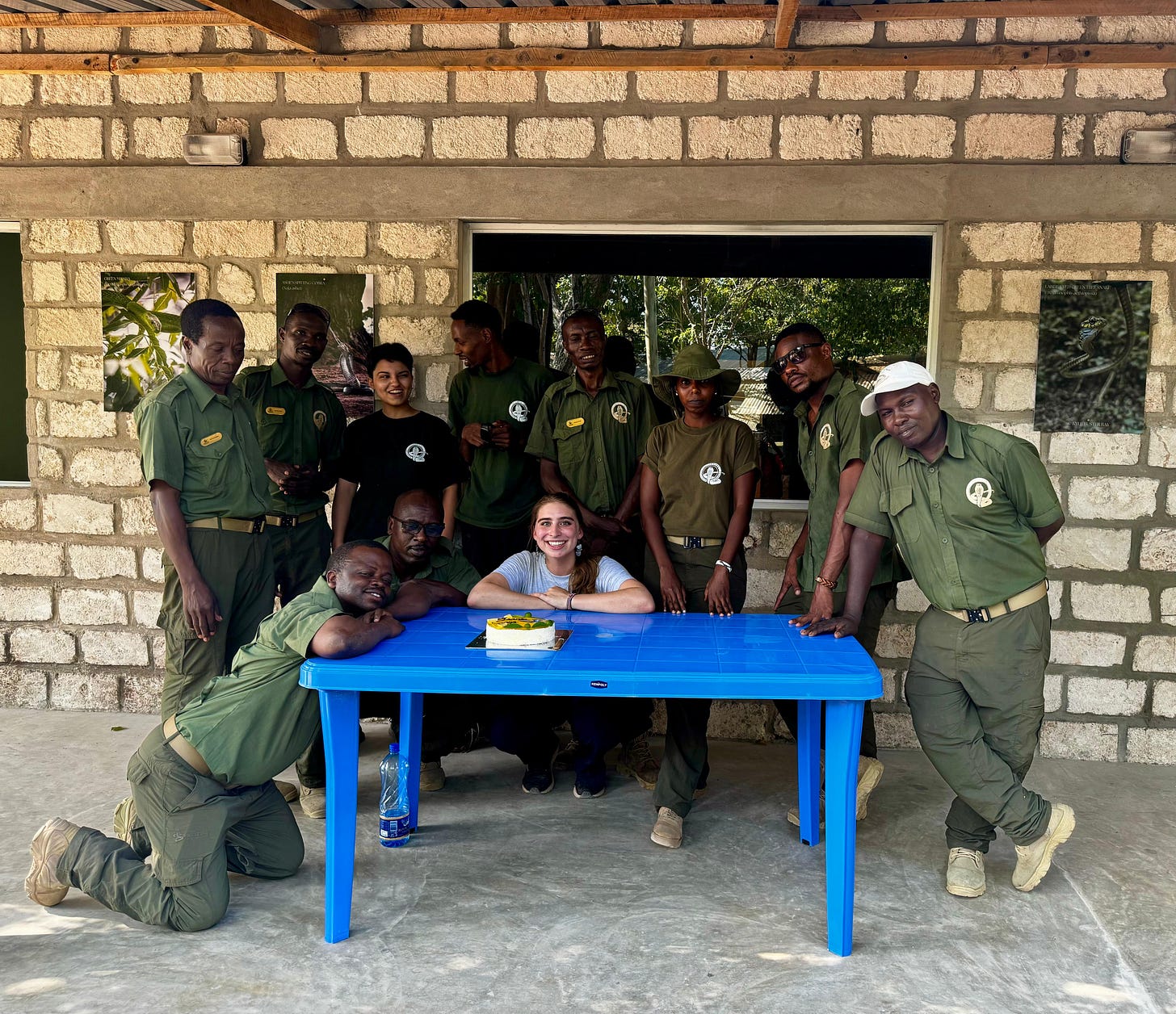
Kenya Snakebite Research and Intervention Center
Back in Nairobi, I visited the Kenya Snakebite Research and Intervention Center. (K-SRIC). The center is part of the Kenyan government, and partners with various ministries, the Pharmacy and Poisons Board (Kenya’s regulatory agency), the Liverpool School of Tropical Medicine and the Indian Institute of Science. I rode a boda boda from the dusty cityscape to lush forest roads, flying past butterflies in search of K-SRIC.
Once arrived, I greeted Munira and Cecile, two researchers at K-SRIC. They explained some of K-SRIC’s past research and current projects. These include:
Community-based epidemiological studies
“Sensitization” or community education on snakebite prevention and first aid through community health workers.
Clinical studies of snakebite to better understand venom’s action
A project to make Kenya-specific antivenom at a national level. At first, K-SRIC plans to collaborate with Premium Serums, who will produce plasma in bulk to be bottled in Kenya. In the long run, the whole production process will move to Kenya.
Such an antivenom project will be huge for Kenya; they could include key species such as Naja pallida that are not directly included in any currently marketed antivenoms for Africa. Besides this, neutralization would be more accurate for East African specimens of more widespread snakes such as puff adders (Bitis arietans) or black mambas (Dendroaspis polylepis). Not only this, but Kenya would become the only Sub-Saharan African country besides South Africa to locally produce antivenom.
At one point, K-SRIC hoped to use motorcycle ambulances to transport patients to hospitals more quickly. Unfortunately, the poor road conditions led to the quick deterioration of the little ambulance, and a bumpy ride for the patients. While the idea was scrapped for the time being, the group is working from various angles to improve the snakebite situation.
After exploring at K-SRIC’s laboratory equipment and beautiful collection of snakes, I walked back along the forest path toward Nairobi’s city center, trying to identify endemic butterflies and birds.
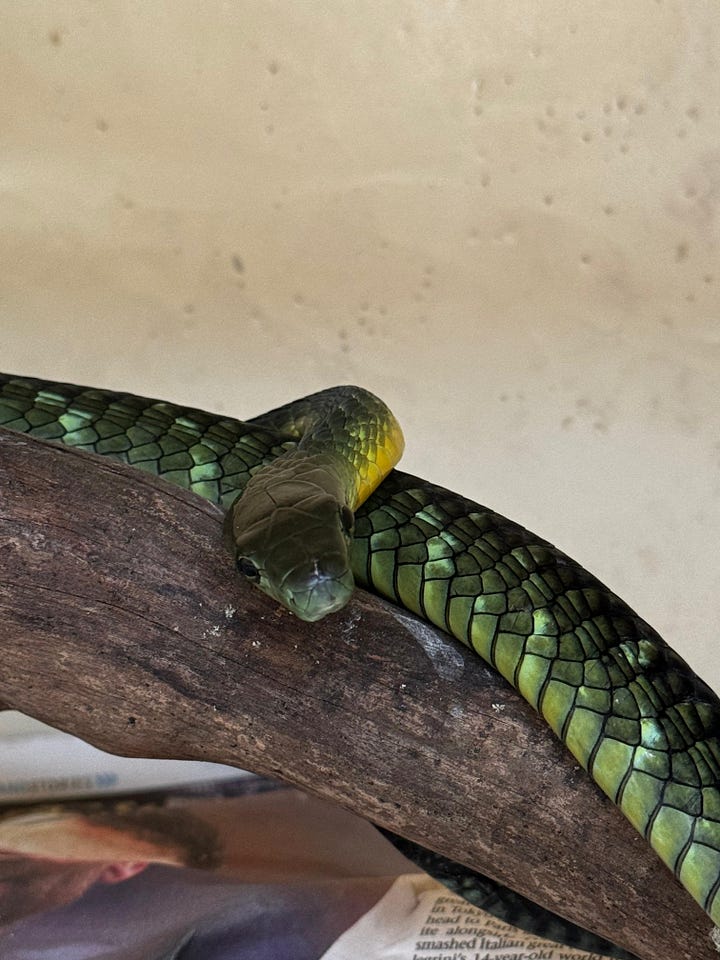

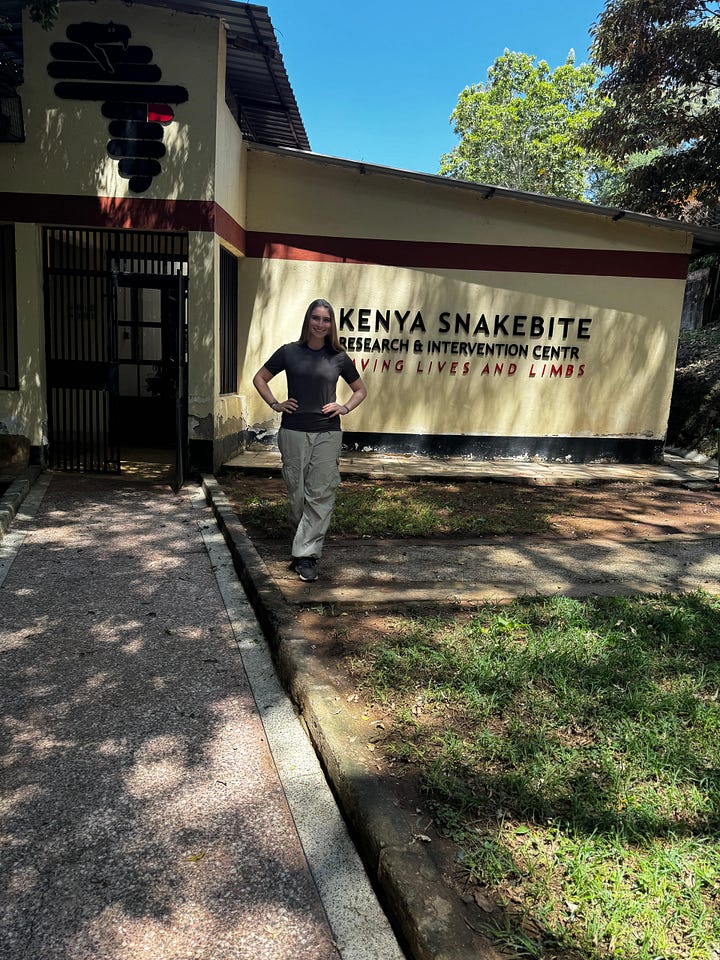
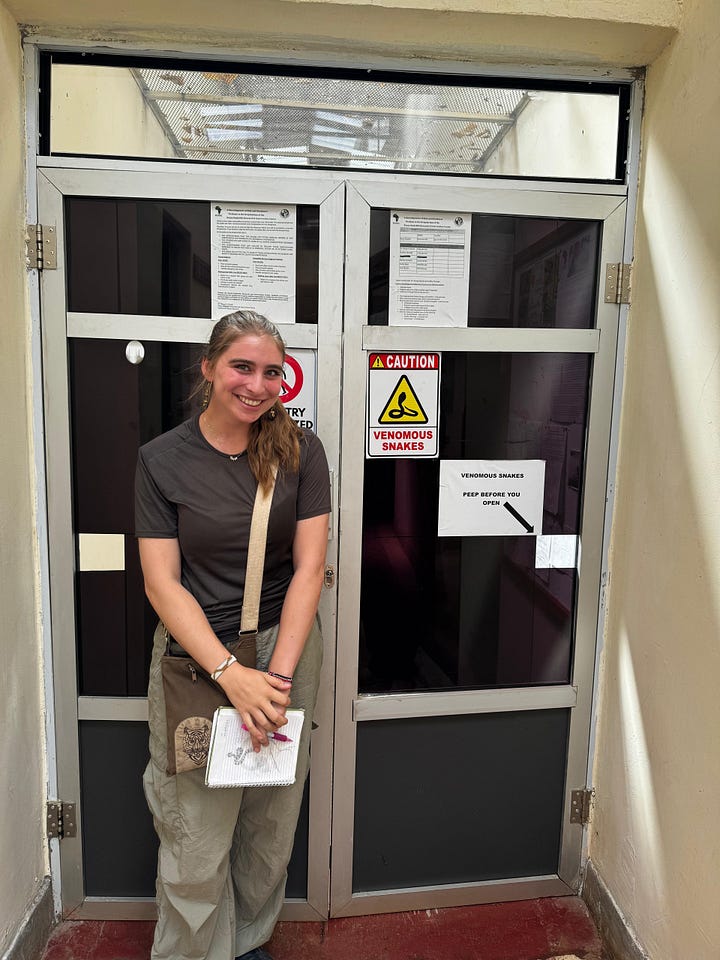
Kenya is one of Africa’s leading countries in snakebite response. It was exciting to learn about so may grassroots initiatives to combat this problem through education, therapeutic improvements, and improvements to healthcare access. I’m optimistic about a future where venomous snakebites aren’t a death sentence, and Kenya is building the foundation to make that dream a reality.
Want to Learn More? Check out these links!
Kenya Snakebite Research and Intervention Center
Antivenom access in Kenya, France 24 article
*Some may be familiar with Watamu Snake Farm’s other names: “Bio-ken” (WSF’s old name), “East African Reptiles” (an insta handle), or the Taylor Ashe Antivenom Foundation (TAAF, a parent organization).
